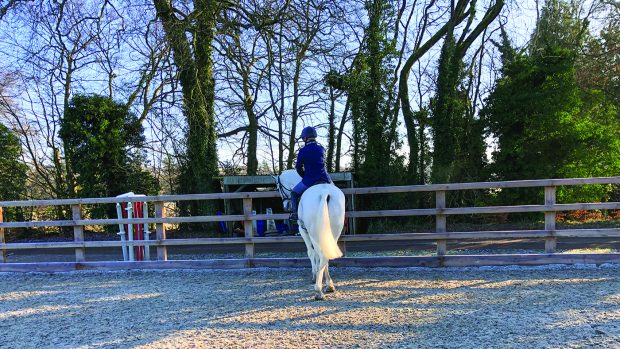What does “connection” in dressage training? It’s a word you will have almost certainly heard many times, but the concept of dressage connection is not the most straightforward and can cause confusion, especially when discussed in conjunction with the contact.
Luckily, renowned German judge and trainer Christoph Hess is able to sum up very clearly what connection, and a horse being “through”, actually means, as part of the British Dressage Convention earlier this month.
“Connection means energy from behind flowing through the whole body of the horse, into the mouth,” says Christoph. “The secret of classical riding, and how to win medals in dressage, is developing this feeling and this picture.
“What we see in the front [of the horse] is the result of the activity from behind: the hind legs through to the back, the neck, the poll and then the mouth. A rider can feel with their fingers the activity of the hind legs, via the contact.”
So far, so straightforward, but how can a rider actually start to develop or improve the connection in their dressage training? It’s important to remember that all the other scales of training play into it, especially rhythm, suppleness, straightness and impulsion, all of which contribute to a good connection being established.
Christoph also advises a particularly effective technique to help develop a good connection: riding in a light seat.
“It is good for riders of all levels to help give the horse’s back a little more freedom,” he says, advising riding a large circle in canter, then coming into a light seat.
“You should be able to ride a whole test in a light position,” he says.
“Many riders think dressage is just sitting trot, but I think the light seat can also be part of a dressage session. The light seat is a position that makes horses happy; it is a welfare position.
“Over the centre line give with both reins. Giving a longer rein helps a horse use his body and open the body. When a horse is able to use his whole body and swing over the back, then you get a good connection.”
You may also be interested in…

How to teach a horse extended trot – and other training tips from Anna Ross

The scales of training explained for horse riders of all levels

6 genius dressage exercises from Christoph Hess to spice up your training
Horse & Hound magazine, out every Thursday, is packed with all the latest news and reports, as well as interviews, specials, nostalgia, vet and training advice. Find how you can enjoy the magazine delivered to your door every week, plus options to upgrade your subscription to access our online service that brings you breaking news and reports as well as other benefits.



